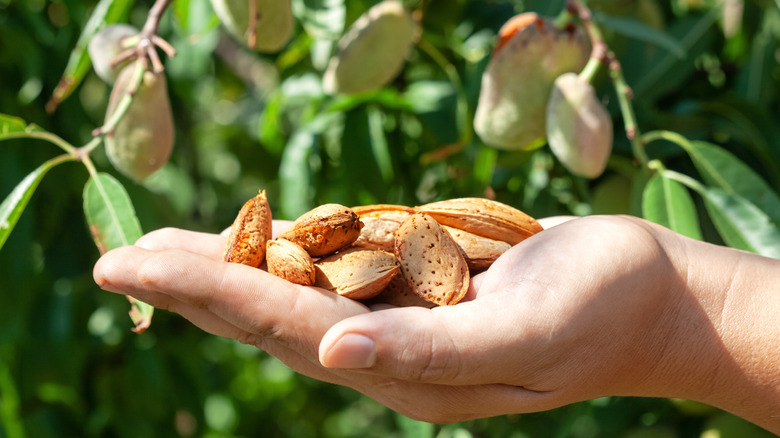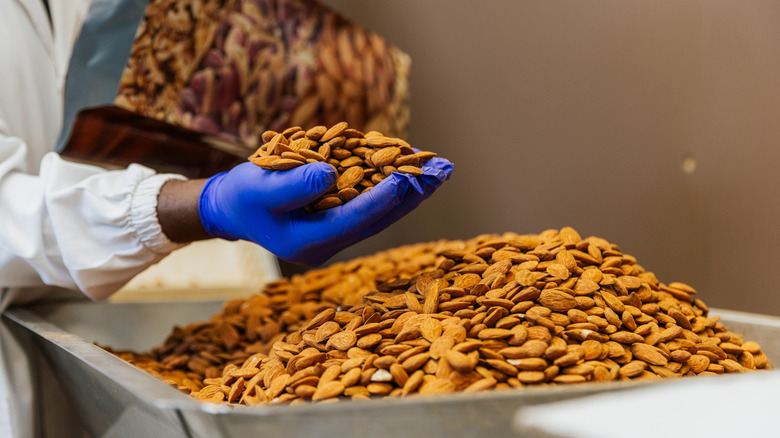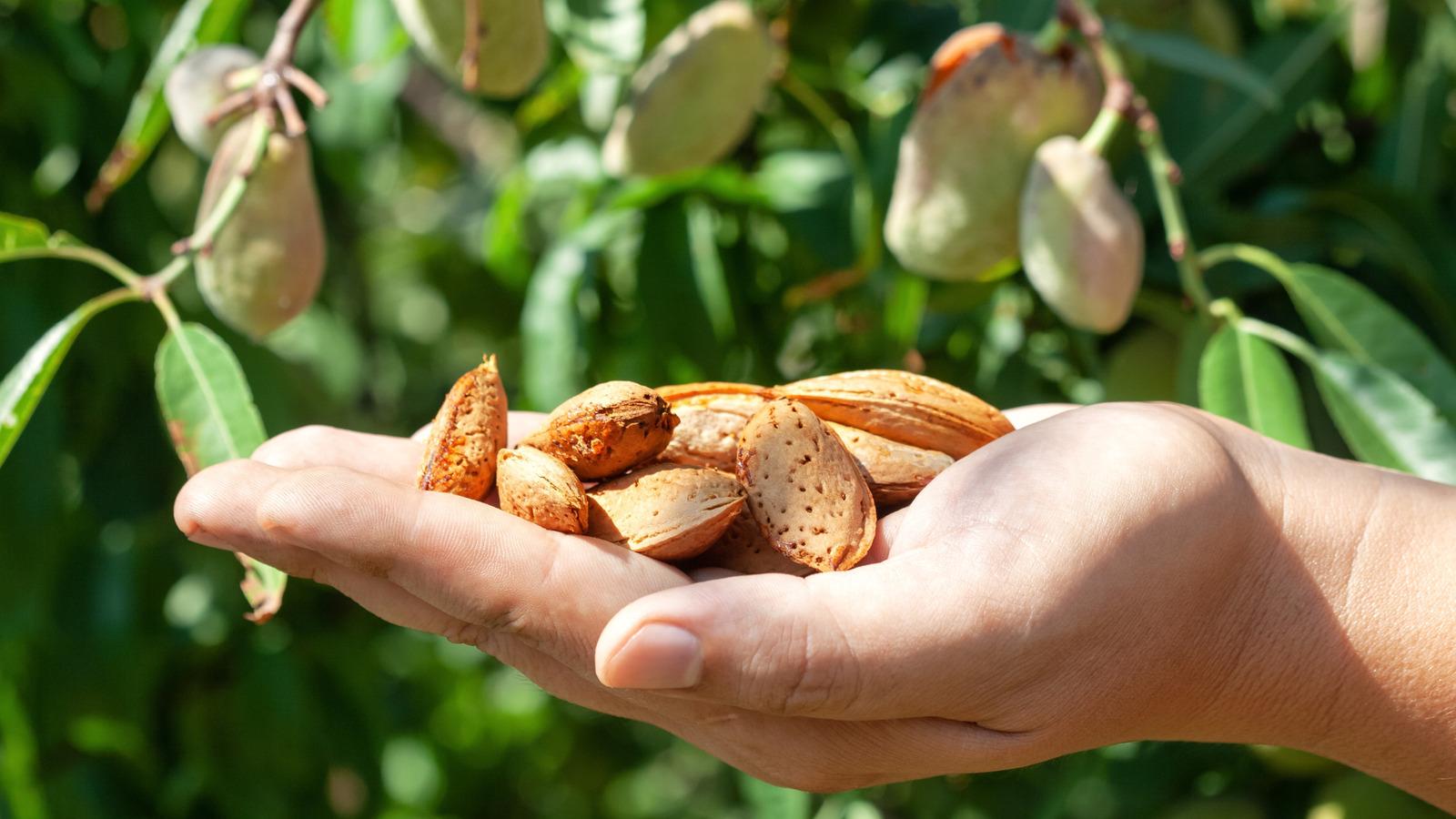
dimid_86/Shutterstock
When many think of America's food-growing hubs, they may think of the vast farm fields of the Midwest or South. In reality, their minds should head to the west coast, where California holds a relatively commanding position atop America's agricultural production. Among the many varieties of produce grown in the Golden State is one that's especially prolific; so much so that California grows more than three-quarters of the entire world's supply of it. This highly desirable (and often controversial) item? Almonds.
In recent years, approximately 80% of the global almond supply has come from roughly 8,000 almond farms throughout California. According to the USDA's National Agricultural Statistics Service, subjective survey data suggests that the yield for 2025 will amount to about 2.8 billion pounds. While impressive, that's still below the 2020 harvest, which crossed the 3 billion pound mark.
More than half of California's almonds are sold overseas to countries such as India, China, Spain, and the United Arab Emirates, with the remainder consumed domestically in the United States. This heavy reliance on international trade can have serious ramifications when the market experiences major shocks. For example, extreme disruptions to global supply chains during the COVID-19 pandemic were a key reason California ended up with more than a billion pounds of extra almonds in 2022.
Dominant globally but not the biggest California crop

Media Lens King/Shutterstock
Despite this dominant position in the global market, almonds are still just the fifth most-lucrative agricultural product produced in the Golden State. With approximately $3.88 billion in sales in 2023, they're beat out by lettuce ($3.93 billion), cattle ($4.76 billion), grapes ($6.52 billion), and dairy products ($8.13 billion).
While there's no denying almonds can be a satisfying snack, they don't come without controversy. They're a notoriously water-intensive crop. The California Water Impact Network has claimed that the nuts use roughly 5 million acre-feet of water per year in the state and that this is roughly equal to the amount used by California households in 2020. With both short-term droughts and long-term groundwater and climate concerns, the crop has become a frequent target of conservationists and those seeking to shift water usage priorities away from an item often seen as a luxury. It even earned a spot on our list of nuts you shouldn't be eating.
To be sure, other countries (such as Spain and Iran) produce this crop, too. However, their yields are just a fraction of the level seen in the U.S. So, the next time you're enjoying a popular plant-based milk, gluten-free flour, or snack made from almonds, you can be relatively sure the product came from America's agricultural center, California.



